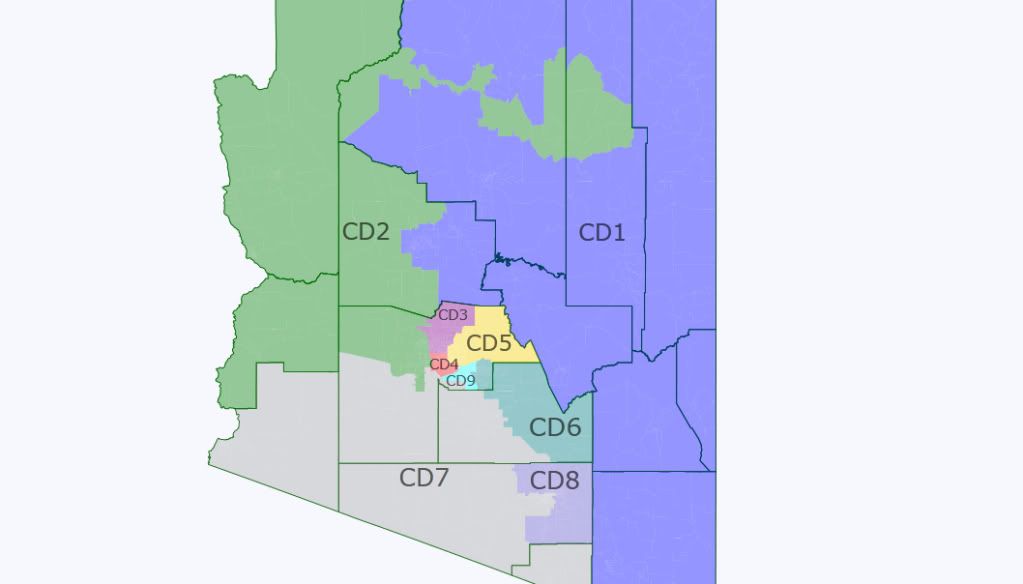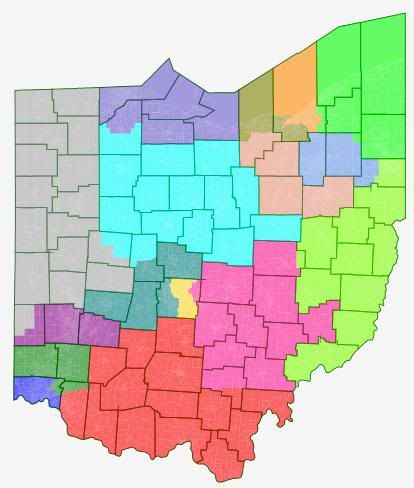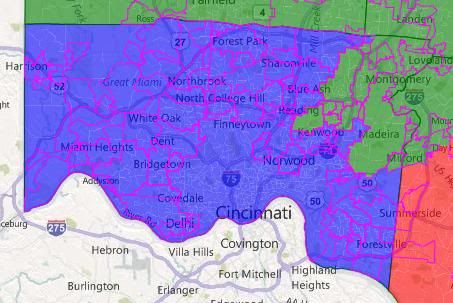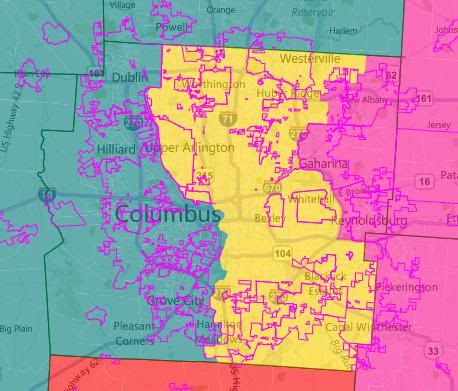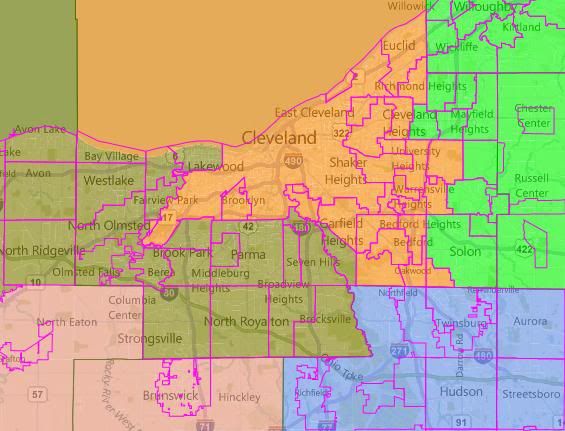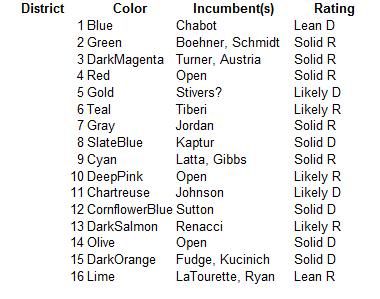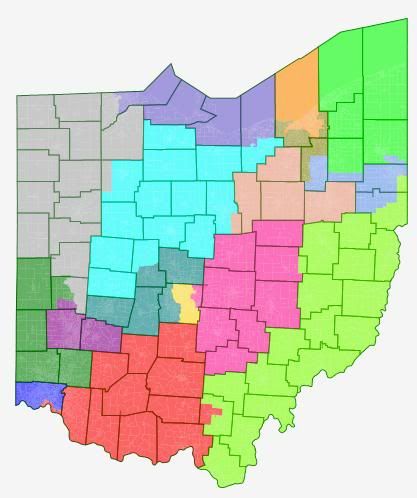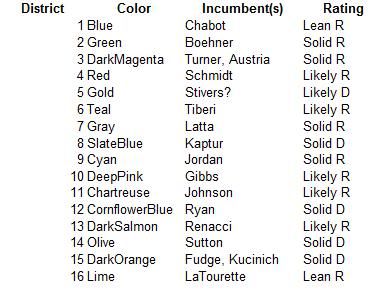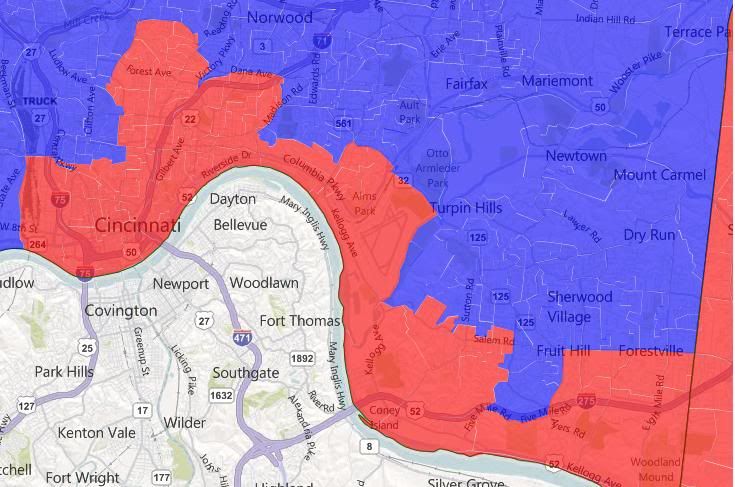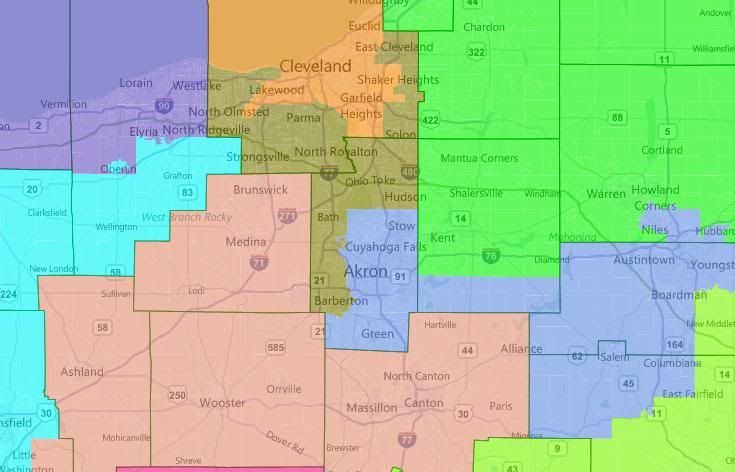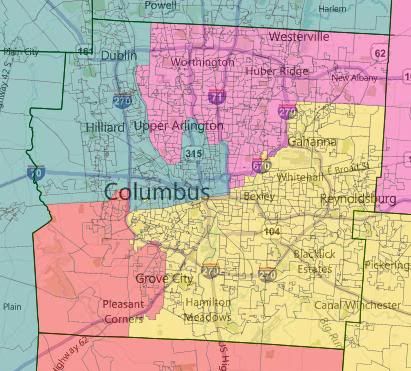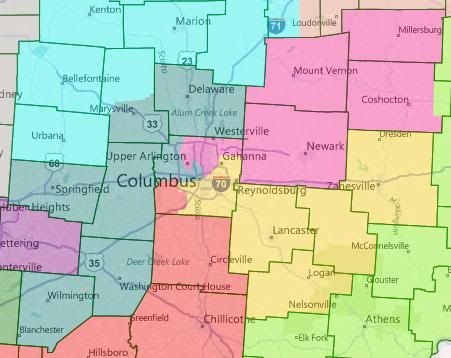(Also at Nevada Progressive)
Here we are again. What, you thought one map was enough? Now that the US Senate race is heating up and speculation is picking up on who will be doing what, I wanted to explore alternative scenarios to one I posted earlier this month. So here’s another option… But I have to warn you, it isn’t pretty.
So what if Shelley Berkley doesn’t run? Last time, we just assumed she was, and certain legislators hope she will so that they can redesign the 1st Congressional District (and form the brand new 4th) to their liking. But hold on, what if Shelley doesn’t run? Certain folks in DC have already been whispering they prefer someone else run for Senate. And now that Dean Heller is officially in the race, they’re making their views more public that they want someone, like Ross Miller or Catherine Cortez Masto, who has already proven ability to win statewide.
So what if Shelley doesn’t run? This is the scenario I explore in the map below.


NV-02 (The Dark Green District)
Population: 674,966
69.3% White (73.8% voting age)
The State of Play
The geographic map hasn’t changed since last time, but the political one certainly has!
Who’s All In?
Again, it’s now official that Dean Heller is running for US Senate. And now that he’s endorsed Heller for Senate, current Lieutenant Governor Brian Krolicki (R) just may be angling to replace Heller in this seat. And on paper, he seems like the ideal candidate: libertarian-conservative, but not too extreme, and very focused on Nevada issues. However, there are three drawbacks for him:
The Wild Cards
– One, Sharron Angle hasn’t yet figured out where she will run. (And yes, it’s pretty much settled that she WILL run for federal office again!) If she runs for Senate again, it will mean extra heartburn for Heller. But if she runs for this seat again, it will mean extra trouble for Krolicki.
– Two, the outspoken and controversial former USS Cole commander Kirk Lippold has already hinted he’ll also run in NV-02, and Nevada “tea party” icon Chuck Muth may already be anointing him as “THE Tea Party’s Favored Son”. So if Sharron Angle runs for Senate instead and Nevada GOP Chair Mark Amodei remains adamant about staying in the race (and potentially siphoning away critical GOP establishment support for Krolicki), this could be a recipe for yet another embarrassing setback for Krolicki and the Nevada GOP.
– And three, the unexpected may finally happen: A prominent A-List Democrat, State Treasurer Kate Marshall (D), is now considering running. If this comes to fruition and the GOP nominee is either weakened by a brutal primary and/or someone that the GOP establishment won’t be happy to support, then NV-02 just might do the unthinkable for the first time ever (elect a Democrat).
2010 US Senate Results
49.6% Angle (R)
43.8% Reid (D)
Estimated 2008 Presidential Results
49% Obama (D)
48% McCain (R)
Estimated Cook PVI: R+4
Early Race Rating: Leans Republican for now, Tossup if Sharron Angle or Kirk Lippold is the GOP nominee
NV-03 (The Purple District)
Population: 675,257
66.4% White (69.7% voting age)
The State of Play
This district is just slightly more Democratic than its last incarnation, and that’s due to the return of the ritzy Summerlin North and Peccole Ranch (home of Shelley Berkley) Las Vegas neighborhoods to NV-01. The rest of the district remains intact, and the partisan makeup wasn’t too altered thanks to the remaining rural territories and the addition of some semi-rural (Las Vegas) West Side precincts along Sahara and west of Rainbow. And other than forming an even more disturbingly gerrymandered Reno-to-Vegas district, there isn’t anything more that can be done to save Joe Heck. And considering Heck’s recent vote to preserve the FHA program assisting homeowners with underwater loans (which is badly needed in the district with the highest foreclosure rate in the country), he now realizes he will need to tack to the middle at times and at least pay some lip service to issues Southern Nevada cares about most (like housing and jobs) to win this still closely divided district.
Who’s All In?
See above. Heck looks to be preparing for reelection already. And since there’s a penchant for close elections and for ticket splitting here, he certainly shouldn’t be counted out in a district that President Obama will probably only narrowly win next year.
The Wild Cards
Should Heck prove to be “too independent” for teabaggers’ liking, or if/when he runs for another office later in the decade, State Senators Elizabeth Halseth (R-Northwest) and Barbara Cegavske (R-Summerlin) will likely remain waiting in the wings. But with the removal of Summerlin North, it may be a little harder to find a West Side Democrat to run here. However, Democrats may want to look at the other end of the valley (particularly at a couple folks on the Henderson City Council) for future recruits.
2010 US Senate Results
48.2% Angle (R)
46.5% Reid (D)
Estimated 2008 Presidential Results
51% Obama (D)
46% McCain (R)
Estimated Cook PVI: R+2
Early Race Rating: Leans Republican

NV-01 (The Baby Blue District)
Population: 675,092
43.7% Latino (38.1% voting age), 32.2% White (37.6% voting age), 14.4% African American (14.4% voting age)
The State of Play
Shelley is back… Or at the very least, this seat is hers as long as she wants it. If Shelley Berkley does decide to sit out the Senate race next year and stay in The House for now, she still has a super safe seat ready for her.
This seat is just slightly more Republican than the last version, but still slightly more Democratic than the NV-01 drawn in 2001. And again, that’s just because the district (once again) has to stretch west toward Red Rock Canyon to dip into Shelley’s elegant stomping grounds of Peccole Ranch and Summerlin North. However, this does very much alter the ultimate state of play here.
Who’s All In?
Without Summmerlin, this district can finally send a North Las Vegas politico like State Senators Steven Horsford or Ruben Kihuen to Congress. But with this configuration, high turnout West End ‘hoods like Summerlin and Desert Shores will probably remain quite dominant in the primary, meaning Shelley will go untouched as long as she wants to remain in NV-01…
The Wild Cards
And should she finally run for higher office or retire later in the decade, a Summerlin area Democrat like State Senator Allison Copening (D-Summerlin) or Clark County Commissioner (and Future Las Vegas Mayor?) Larry Brown (D-Las Vegas) definitely has a good chance here. But if Ruben Kihuen can be patient and turn out his enthusiastic “NorTown” base, he will still have a strong fighting chance as this district continues to inch toward becoming majority Latino and supermajority minority-majority. And honestly, neither can Horsford be counted out, especially if he can wait another cycle or two for Shelley to step aside.
2010 US Senate Results
62.5% Reid (D)
33.1% Angle (R)
Estimated 2008 Presidential Results
66% Obama (D)
32% McCain (R)
Estimated Cook PVI: D+13
Early Race Rating: Safe Democratic, regardless of who ultimately runs here

NV-04 (Light Spring Green)
Population: 674,936
48.6% White (53.2% voting age), 27% Latino (23.1% voting age), 11.8% Asian American (12.3% voting age)
The State of Play
It’s still open season here… Perhaps even more so if Shelley indeed decides to stay put next door. The district hooks into The West Side to take whiter neighborhoods left out of NV-01, then jumps down to the increasingly diverse Spring Valley, then hops across The Strip to The East Side and some of East Las Vegas (and ultimately to Lake Mead), then climbs uphill to grab the more Democratic leaning Henderson precincts of Green Valley and Green Valley Ranch, then sweeps through the diverse and increasingly Democratic friendly Silverado Ranch communuity, then hops back across The 15 to snatch some minority-majority neighborhoods in the once rapidly growing Southwest.
Who’s All In?
Need we ask? Rory Reid is probably out of the running for good, and Dina Titus‘ political stock continues to rebound. This time, she just might get a seat she can get comfy in.
The Wild Cards
However, Dina also can’t take this seat for granted. Both Former Assembly Speaker Barbara Buckley (D-Spring Valley) and current Assembly Speaker John Oceguera (D-Silverado Ranch) are eyeing this district, and both have far better relationships with the Nevada Democratic establishment than Dina Titus.
2010 US Senate Results
56.0% Reid (D)
39.3% Angle (R)
Estimated 2008 Presidential Results
60% Obama (D)
37% McCain (R)
Estimated Cook PVI: D+7
Early Race Rating: Likely Democratic, and will probably be downgraded to Safe Democratic so long as the eventual nominee isn’t caught in a Rory-like scandal
Suffice to say, a whole lot changes if Shelley Berkley decides to stay in The House rather than run for Senate. The Clark based districts will probably have to be gerrymandered at least somewhat to keep everyone happy.
And up north, the fate of NV-02 may very well rest on what Sharron Angle decides to do, and what her once ardent “tea party” supporters think of Brian Krolicki and Mark Amodei. If Angle can regain their trust, or if she runs for Senate instead and allows someone like Kirk Lippold to consolidate the tea tinged Northern Nevada far right base, Krolicki may not be in for an easy ride regardless of whether Dean Heller decides to anoint a successor. And with Kate Marshall now eyeing a run here as well, Democrats may actually have a pickup opportunity up north next year.






